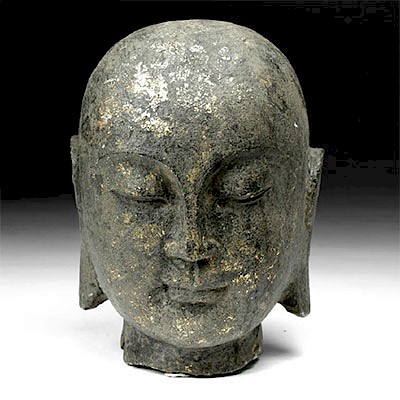Japanese Edo Tsuba - Iron, Copper, 18K Gold
Lot 145
About Seller
Artemis Fine Arts
686 S Taylor Ave, Ste 106
Louisville, CO 80027
United States
Selling antiquities, ancient and ethnographic art online since 1993, Artemis Gallery specializes in Classical Antiquities (Egyptian, Greek, Roman, Near Eastern), Asian, Pre-Columbian, African / Tribal / Oceanographic art. Our extensive inventory includes pottery, stone, metal, wood, glass and textil...Read more
Categories
Estimate:
$800 - $1,200
Absentee vs Live bid
Two ways to bid:
- Leave a max absentee bid and the platform will bid on your behalf up to your maximum bid during the live auction.
- Bid live during the auction and your bids will be submitted real-time to the auctioneer.
Bid Increments
| Price | Bid Increment |
|---|---|
| $0 | $25 |
| $300 | $50 |
| $1,000 | $100 |
| $2,000 | $250 |
| $5,000 | $500 |
| $10,000 | $1,000 |
| $20,000 | $2,500 |
| $50,000 | $5,000 |
| $100,000 | $10,000 |
| $200,000 | $20,000 |
About Auction
By Artemis Fine Arts
Nov 29, 2018
Set Reminder
2018-11-29 10:00:00
2018-11-29 10:00:00
America/New_York
Bidsquare
Bidsquare : Holiday Glitz - Ancient / Ethnographic Art
https://www.bidsquare.com/auctions/artemis-gallery/holiday-glitz---ancient-ethnographic-art-3672
What to give this holiday season? Think silver, gold, bronze, shiny, glittery, wearable, festive. We ship worldwide and handle all shipping in-house for your convenience. This is one sale you don't want to miss! Artemis Fine Arts info@artemisgallery.com
What to give this holiday season? Think silver, gold, bronze, shiny, glittery, wearable, festive. We ship worldwide and handle all shipping in-house for your convenience. This is one sale you don't want to miss! Artemis Fine Arts info@artemisgallery.com
- Lot Description
East Asia, Japan, Edo Period, ca. 1603 to 1868 CE. A fabulous forged-iron Maru Gata tsuba, a disc-shaped hand guard traditionally employed on Japanese swords. The obverse side of the tsuba displays a pair of applied copper maple leaves with serrated edges as well as smaller leaves and vines inlaid around the top and bottom in gleaming 18K gold. The bottom of the reverse side bears an additional copper leaf surrounded by 18K gold leaves and vines. The central blade opening (Nakago-ana) is flanked by a pair of decorative holes, one with a small protrusion on one side (Kogai Hitsu-ana) and one without (Hozuka Hitsu-ana). An ovoid area surrounding the blade opening (Seppa-dai) exhibits a signature which has faded and been rendered illegible over time. A stunning example of high-quality Japanese craftsmanship! Size: 2.625" W x 2.75" H (6.7 cm x 7 cm).
A tsuba is the hand guard of a traditional Japanese sword, usually a katana or tachi. Its primary purposes are to balance the sword, prevent one's hand from sliding down the blade and, as a last resort, as a block against an opponent's thrust or slash. However, as time and skills developed, the tsuba evolved into an artistic item and symbol representing wealth, prestige, or skills as a swordsman. Early tsuba, known as neri tsuba, were made of leather encased in an iron or wooden frame which was occasionally lacquered for strength and stability.
Provenance: ex-private Rochester, Michigan, USA collection
All items legal to buy/sell under U.S. Statute covering cultural patrimony Code 2600, CHAPTER 14, and are guaranteed to be as described or your money back.
A Certificate of Authenticity will accompany all winning bids.
We ship worldwide and handle all shipping in-house for your convenience.
#138145Surface wear and abrasions commensurate with age and use, minor nicks around blade opening, tarnishing to copper leaves, and fading to inscribed signature, otherwise intact and excellent.Condition
- Shipping Info
-
All shipping is handled in-house for your convenience. Your invoice from Artemis Gallery will include shipping calculation instructions. If in doubt, please inquire BEFORE bidding for estimated shipping costs for individual items.
-
- Buyer's Premium



 EUR
EUR CAD
CAD AUD
AUD GBP
GBP MXN
MXN HKD
HKD CNY
CNY MYR
MYR SEK
SEK SGD
SGD CHF
CHF THB
THB













